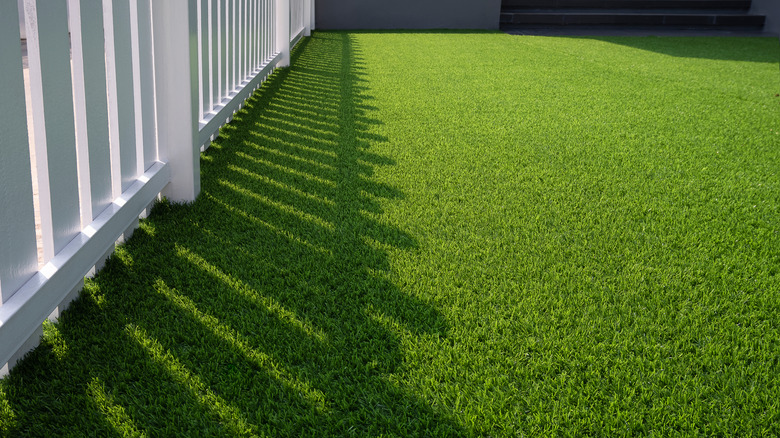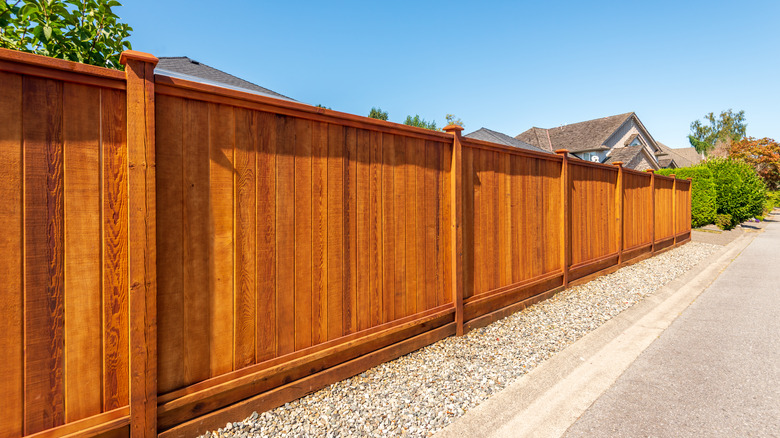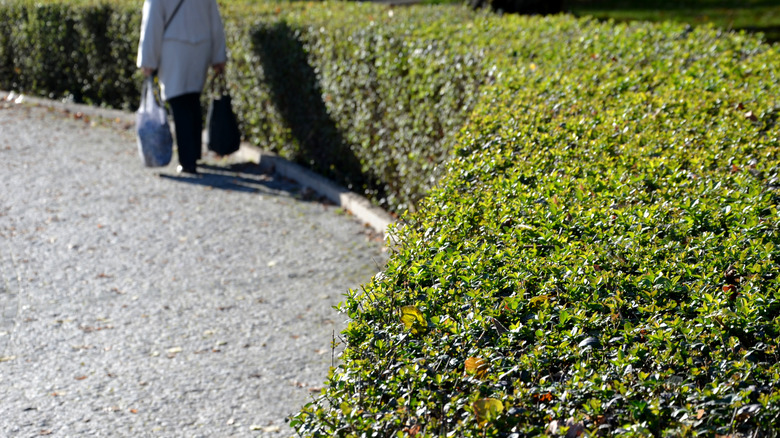3 Cost-Effective Ways To Add A Fence To Your Property
The possibility of installing a fence around your property is appealing for a variety of different reasons. For example, it may make your home more secure, deter nosy neighbors from prying into your affairs, and give it excellent curb appeal by making it much more attractive. What's more, it can also help keep out certain animals or pests.
On the other hand, we are aware that putting up a fence may not be the best choice for your bank account in certain cases. For example, LawnStarter estimates that the price of aluminum might reach as high as $76 per linear foot. A wrought iron fence can cost up to $34 per linear foot (per LawnStarter).
If you are considering installing a fence on your property, we have produced a list of three alternatives that will likely be within a price range that you can choose from. We've also highlighted a few key pros and cons for each option so you can make the most informed decision.
Wooden fencing
There are a number of wood fencing options that you can choose from, including picket fencing, wood lattice fencing, louver fencing, vertical board fencing, ornamental wood fencing, and even composite wood fencing. According to HomeAdvisor, wooden fencing costs around $17 to $45 per linear foot, depending on the type of wood.
However, as Gardeningetc confirms, the most cost-effective solution you can opt for is repurposed wooden pallets: You can acquire some for a very low price, or sometimes even for free. It is also a very environmentally friendly option as you would reuse pallets that might otherwise go to waste.
A pallet fence is also quite easy to set up and is much sturdier than you might expect. It is, however, important to note that it may not provide enough height if you're looking to keep certain animals out. It may also not look as chic as a store-bought fence and may be vulnerable to pests such as termites if you don't treat the wood (via Morning Chores).
Green fencing
Another interesting choice of affordable fencing involves plants. You'd be surprised to find out just how many creative ways there are to incorporate plants into an affordable fencing choice. Here are two great fence ideas for you to consider.
Privet, a plant species commonly used to create hedges, is sophisticated and a considerably cheap choice of fencing. This is also the perfect option if a wall is impractical or not allowed. These plants can reach heights of up to 15 feet and widths of up to 4 to 8 feet. Privet doesn't require a lot of maintenance in terms of fertilizer and regular watering. However, you will need to prune it after its flowers appear. It is also noteworthy that privet is toxic and doesn't look great all year round as it is not evergreen (via Love to Know).
Another option for green thumbs is to set up a vertical garden wall. According to Real Homes, if you want to grow tasty fruits or vegetables but don't have much room, you may consider a vertical garden. In this popular method, plants are grown on a vertically suspended panel that can stand alone or is set up on a wall. This is the best option for those of you who want to mill two seeds with one stone — a garden and a fence all in one.


